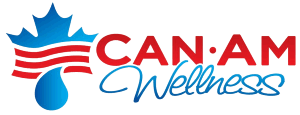Water, Water Everywhere
Pat Bennett
Ever since Walkerton’s tragic deadly E. coli outbreak, Canadians across this country are asking, “Is our tap water really safe?” We have every right to ask. Walkerton, a fiasco of cover-ups and incompetence whose resulting deaths and illnesses were unnecessary, could have happened anywhere in Canada..
Ever since Walkerton’s tragic deadly E. coli outbreak, Canadians across this country are asking, “Is our tap water really safe?”
We have every right to ask.
Walkerton, a fiasco of cover-ups and incompetence whose resulting deaths and illnesses were unnecessary, could have happened anywhere in Canada. Severe punishment for those who were aware of the contamination but took no action could help curb further lax water inspection. But clearly, everywhere, governments must do much more to protect groundwater from contamination.
In the relentless pursuit of profits, industry and other human activities have polluted most of the lakes, rivers and aquifers that provide our drinking water. Urban dwellers must rely on the efficiency and inspection of treatment plants while most rural residents rely on well water and must monitor their own water safety. About 30 per cent of Canadians rely on groundwater for domestic use. Two-thirds of these live in rural areas.
E. coli: Through the Loopholes
The citizens of Garland, Nova Scotia have been plagued by water problems for a decade. Three of six private wells tested were contaminated by fecal coliform bacteria (from animal or human waste). That can include E. coli. The province’s Ministry of the Environment can’t find the source of the problem, but resident Rodney Rhodenziner says he knows of a farm where cow manure still flows directly into a water supply stream despite a 1986 ministry cleanup order.
A recent review of Nova Scotia’s Environmental Protection Act shows officials are reluctant to enforce the law and have little support from politicians. “They’re up against an incomplete legislative framework,” says environmental consultant Anne Mueke, which is full of loopholes allowing people to avoid taking responsibility.
Thomas Falle, whose laboratory conducted the Garland test, says he gets similar test results all the time across the country. The Canadian Environmental Defence Fund (CEDF), Pollution Probe and 14 public interest groups have formed a coalition representing five threatened municipalities (including Walkerton) in water quality actions. One aims to protect the Oak Ridges Moraine, the “rain-barrel” of southern Ontario, from a proposal to build 7,000 new houses. Stopping urban sprawl is critical to the health of the groundwater supply.
In Northern Ontario, Gulf Oil Ltd contaminated Port Loring’s water supply back in 1978. Residents are still waiting for clean drinking water and can only drink bottled water.
Another concern is the alarming rate at which factory farming is increasing, considering that one farm’s 2,500 sows (producing 20 piglets per year) can create as much effluent as a town of 125,000 people without a waste treatment system. Water- and airborne contamination awaits everyone living nearby, with resulting illness, miscarriages, birth defects and even death. Citizens near London, Ontario may soon face the powerful noise, smell and threats to drinking water from a new factory hog farm. CEDF and the Rural Stewardship Association are fighting this decision and hope to use municipal bylaws to ban such operations.
Scrimping With Chlorine
Mixed with industrial chemical waste, which governments virtually ignore, effluent and other toxic substances are “handled” with additional chlorine at water treatment plants. Although chlorine is itself poisonous, better means of water purification are more expensive.
In British Columbia, Arrow Creek has supplied Creston with pure chlorine-free water for the past 86 years, but now regional health inspector Dr Andrew Larder insists Creston use chlorine as a disinfectant against the wishes of the community. This is likely linked to the threat of future logging and its effect on the watershed, a problem of paramount importance on the West Coast.
Despite Premier Dosanjh’s promise to protect BC drinking water, his government may replace Creston Valley Forest Corporation’s 15-year forest licence with a 99-year renewable licence to log the pristine, 7,900-hectare Arrow Creek Watershed Reserve. Will Kopp, coordinator of the BC Tap Water Alliance, says the Premier should deny the licence, halt future logging and legislate mandatory community water supply watershed protection. Public input is now being sought to protect BC water safety (see the website elp.gov.bc.ca).
Meanwhile, citizens should pressure governments to assure all water source inspections are carried out properly and the findings made public. The federal government should impose a moratorium on factory farms until clean water protections are strengthened and pollution from current facilities eliminated. Public input should always be solicited prior to granting any permits for new or larger factory farms. Open-air lagoons should be phased out and replaced with better technology to treat the manure. Frequent inspection of these facilities should also be assured. Consumers should avoid factory-produced meat in favour of meat produced by organic farmers.
All Canadians have the right to safe, clean drinking water. The onus shouldn’t be on us to protect it. That is why we have government isn’t it?
Test Your Own Water
To get your water supply tested, check the yellow pages for “Laboratories Analytical” or “Lab-testing” or check with local public health units. Labs provide sampling kits and instructions. Look for coliform and fecal bacteria tests cost about $25.00 plus shipping.
Reserve Water Unsafe
Any aboriginal communities rely on unsafe water supply systems. Health Canada reported in 1995 that of 171 reserves, one in five relied on water systems that could “affect the health and safety of the community if the problems were not addressed.” No action has been taken to remedy this situation. The Innu Nation at Davis Inlet has never had running water and the Attiwapiskat First Nation on James Bay has long suffered serious drinking water problems.
